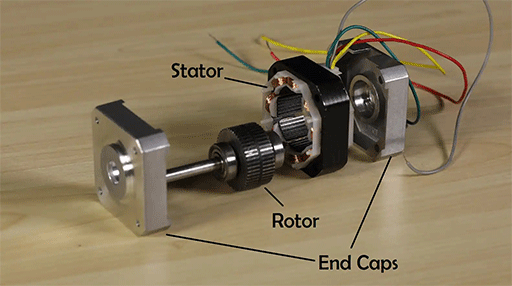
Figure 1: Electric motors are widely used.
Electric motors play an irreplaceable role in production, transmission and distribution. Each of them has their own structures, working principles, types of source power and applications. And they can be classified accordingly. Detailed classifications of various electric motors and their features are shown below.
According to Structures and Working principles
1. Asynchronous motors and synchronous motors
1) Asynchronous motor: the motor speed cannot reach the speed of the stator magnetic field
2) Synchronous motor: the motor speed is synchronized with the speed of the stator magnetic field
2. Induction motors and AC commutated motors
1) Induction motor: the three-phase alternating current is passed into the stator loop, and the three-phase is continuously transformed, making the magnetic constantly change its directions. Then, it is equivalent to the rotor’s cutting the magnetic field line. Consequently, an induced current is generated, and so is a force, which pushes it to rotate.
2) Alternating current (AC) commutated motor: the motor is fed with AC power. Through the commutator, the commutator processes its original waveform into a half waveform, i.e., half of a sine. The principle is also electromagnetic induction.

Figure 2: Permanent magnet motors vs. induction motors in sectional view.
3. Permanent magnet synchronous, reluctance synchronous, hysteresis synchronous motor
1) Permanent magnet synchronous motor: permanent magnets provide excitation (excitation: a device that provides a working magnetic field to a synchronous motor or generator).
2) Reluctance motor: a synchronous motor that generates reluctance torque by utilizing the unequal reluctance of the rotor's quadrature axis and direct axis
3) Hysteresis Synchronous Motors: using hysteresis materials to generate hysteresis torque
4. Three-phase asynchronous, single-phase asynchronous, shaded-pole asynchronous motor
1) Three-phase asynchronous: access to 380V three-phase electricity. Constantly changing, producing a magnetic field. The rotor of the motor is not synchronized with the rotating magnetic field of the stator, so it is called three-phase asynchronous.
2) Single-phase asynchronous: access to 220V, single-phase electricity. Two-phase windings are on the stator, differing by 90° electrical angle in space. One phase is the main winding, also known as the running winding; the other phase is the secondary winding, also known as the starting winding. When a single phase winding is fed with alternating current, a magnetomotive force is generated.
3) Shaded pole asynchronous: it is also a single-phase motor, and it is connected to 220V single-phase electricity. There are two windings inside, a main winding and a secondary winding. Its secondary winding is a shaded pole ring, which is used to generate a shaded pole magnetic field with a phase difference with the main magnetic field. The two magnetic fields interact to form a rotating magnetic field.

Figure 3: Shaded pole induction motor: 4 poles
5. Single-phase series excitation motors, universal motors, repulsion motors
1) Single-phase series-excited motor: single-phase: single-phase power is supplied; series-excitation: armature winding and excitation winding work in series. Some of them also belong to universal motors.
2) Universal motors: operating on either AC or DC power
3) Repulsion motor: It is a single-phase AC commutator motor. The stator windings are powered by a single-phase power supply. The rotor is an armature winding with a commutator shorted by brushes. When the brushes are offset counterclockwise from the geometric centerline, the rotor turns clockwise. When the brushes deviate clockwise from the geometric centerline, the rotor turns counterclockwise.
According to Operating Power
1. DC Motors
1) Brushed DC Motor: commutated mechanically. The poles do not move, and the coil rotates. The internal carbon brushes play the role of commutation. The carbon brushes are constantly worn, so the carbon brushes need to be replaced regularly. Brushed DC Motors can be further divided into permanent magnet DC motor and electromagnetic DC motor:
a. Permanent magnet DC motor: the internal magnet adopts permanent magnet, which is fed with direct current. By changing the polarity of the power supply, the direction of rotation can be changed.
b. Electromagnetic DC Motor: electromagnetic DC consists of stator poles, rotor armatures, commutators, brushes, etc. The main poles are composed of iron cores and excitation windings.
2) Brushless DC motor: Electronic commutation. The coil does not move, and the magnetic poles rotate. Usually, the position of the permanent magnet is sensed by a Hall element, and then the direction of the current is controlled to achieve the commutation effect.
2. AC motors can be classified into single phase motors and three-phase motors.
According to the Use
1. Motor drivers
1) Commutatorless motors
a. Induction motors
b. Synchronous motors (further classified into: permanent magnet excitation synchronous motors, electrically excited synchronous motors, hybrid excitation synchronous motors and variable reluctance motors)
2) Commutator DC Motor
2. Motor controllers

Figure 4: The basics of a stepper motor.
1) Stepper motors: converting electrical pulse signals into angular displacement or linear displacement. Each pulse signal corresponds to an angle. The rotational speed is related to the pulse frequency.
2) Servo motor
Related Info
Three Control Methods of Servo MotorServo Motors: Construction, Types, Advantages & Applications
AC Servo Motor Construction and Working
What is an Electric Motor?
Basic Structures and Working Principles of Electric Motors


